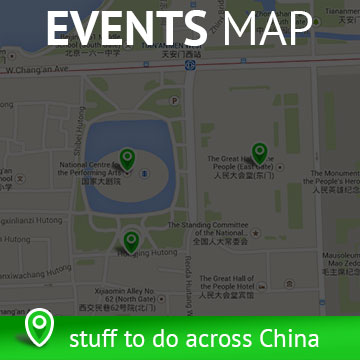
A PhD student and Fulbright scholar based in Beijing has a great little Tumblr blog that shows, with data, that you can skip the expensive air purifiers and make your own for about $30.
This post goes through the details of how to make the air purifier, and where to buy a proper filter. The principle is embarrassingly simple: Buy a typical box fan, stick a HEPA filter on the front of it, breathe clean air — no kidding.
From the blog: From my perspective, filter companies like IQ Air are taking advantage of how little we know about air pollution and the fact that you need expert instruments to tell whether the filter is working or not. When consumers don’t know how to assess the products we buy, we often use price to tell us whether the product is good. That happens with expensive wines all the time. I’m convinced you can breathe safe air in China for far less than filter companies want you to believe.

In a follow-up video, the author of the blog clearly illustrates that the air coming out of the filter is virtually absent of particles 2.5 micrometers and above (the stuff most often measured when you see those PMI 2.5 ratings in the news). It also greatly reduces 0.5 micrometer particles.
But it’s one thing to measure the air quality coming out of the filter, and quite another seeing if it effectively scrubs the ambient air in an apartment. The short answer: yes, yes it does. The longer (more chart-happy) answer here.
Not only does the DIY air purifier perform well, tests indicate that it may actually out perform the expensive alternatives — at the very least it is just as good at a fraction of the cost.








Liking the sound of this!
I’m fortunate to live in the relatively clean-air of Hainan, but if I lived in a larger (or more industrial) city, or spending colder months anywhere north of the Yangtze, I’d definitely be making one of these.
Fantastic tip! I’ve already purchased the filter!
I live in Shanghai, and during these hot nights I run a fan all night long, which tends to blow the dust around. Each morning when I wake up my nose feels slightly stuffy, almost like I have an allergy. This feeling goes away when I either leave the room or turn off the fan or AC and the air is still. I think throwing together something like this is exactly what I need!
I can’t believe nobody thought of this before. This is a great idea! I’m definitely going to try it here in Beijing.
This is real awesome. Wanna try if got time.
I have been always a bit skeptic if those expensive devices work or are worth of money and trouble. This DIY purifier is so simple that it will work for sure and if it doesn’t it’s practically free.
Cannot beLIEVE we hadn’t thought of this already. Genius. I will definitely be making a couple. We’ve got air in Qingdao, but we do get the occasional triple-digit days, and a couple times each year it will get into the 400s and 500s.
Awesome!
There was a NASA study a few years back that shows you can have completely fresh air for your home using three kinds of plants. Here they are with their Chinese names. I have all of them and the fresh air has greatly increased my concentration when studying and reduced head aches.
1 – Areca palm – chrysalidocarpus lutescens ??? SÃ n wei kuÃ
2 – Mother-in-law’s tongue – sansevieria trifasciata – (huweilán)
3 – Money plant – epipremnum aureum (luluo)
There is a TED talk on it by one of the researchers. Look up “Kamal Meattle: How to grow fresh air”
Hi there! This is Thomas. I founded Particle Counting and Smart Air. Thanks for helping spread the word that people can get clean air without dropping 10,000 RMB!
All of our data and methods are open, so feel free to check out exactly how we do our tests and reach the conclusions we do:
http://particlecounting.tumblr.com/post/55665836265/purifier-tests
And check out the live test of the air coming out of the DIY filter:
http://particlecounting.tumblr.com/post/55947941919/diy-compared-to-expensive-filters
Feel free to make your own! We’re also shipping units from SmartAirFilters.com. For 200 RMB, we’ll ship a unit to your door. Plus you get a HEPA from a manufacturer that we’ve tested personally.
Hello Ryan
Great article thanks. I live in Xiamen and like Hainan also thought we were safe but my lungs have been killing me lately and I see we are also 163.
I suppose you would need to measure whether your fan has the strength to blow through the filter.
What form would this measure take? How do you measure the filter? How do you measure the fan? Would it be purely wattage?
Thanks
Lee
@Lee: As we’ve almost always got our windows open, and Haikou’s air is pretty decent quality (by comparison at least), I’ve never gone to the bother of creating or purchasing one of these.
Perhaps Thomas can shed some light on your questions, or maybe his Web site has some more info?
EDIT: I need to eat my words a bit — Haikou’s AQI has been well into the “unhealthy” range the last few days.
Pingback: Which Country has the World's Worst Air Pollution?Jason Munster's Energy and Environment Blog